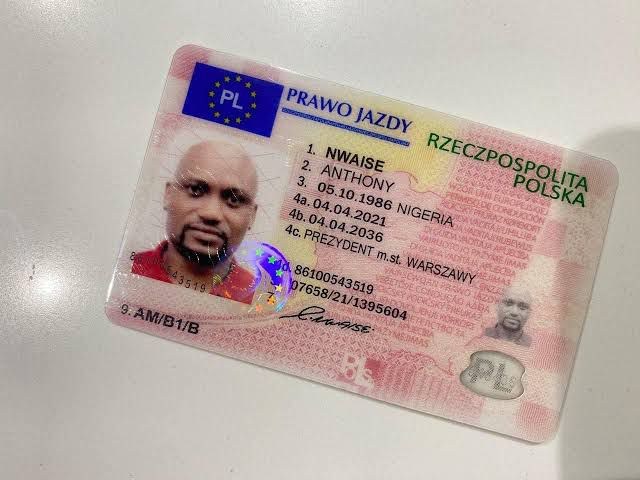Understanding Driving Licenses: Types, Requirements, and Frequently Asked Questions
Driving is a basic element of modern life, and getting a driving license is a critical turning point for many people. This article checks out the various types of driving licenses available, the requirements to get them, and responses frequently asked concerns related to the subject. Full Content on driving licenses can assist individuals understand the value of picking the proper type of license to meet their needs.
Types of Driving Licenses
Driving licenses can vary in between nations and regions, but they normally fall into several major categories. The following table sums up the most typical kinds of driving licenses, including their functions and common limitations.
| Kind of License | Description | Typical Restrictions | Eligibility Age |
|---|---|---|---|
| Learner's Permit | Permits newbie drivers to practice. | Need to drive with a licensed grownup. | 16-18 years old |
| Class C License | Standard license for traveler vehicles. | No constraint on number of travelers. | 18 years or older |
| Class A License | Industrial license for large vehicles. | Should adhere to stricter guidelines. | 21 years or older |
| Class B License | For driving buses and bigger automobiles. | May require special endorsements. | 21 years or older |
| Motorcycle License | For operating motorcycles. | Must wear a helmet; differs by state. | 16-18 years of ages |
| International License | Allows legal driving in foreign nations. | Should have a valid domestic license. | 18 years or older |
Learner's Permit
The learner's authorization is the very first step for many individuals venturing into the world of driving. This permit allows beginner drivers to practice driving under supervised conditions, generally requiring a certified grownup over a particular age to accompany them in the lorry.
Class C License
The Class C license is the most commonly held driving license, permitting individuals to run standard traveler vehicles. This license usually has fewer limitations compared to other categories.
Class A and B Licenses
Class A and B licenses are necessary for operating commercial cars. These licenses require special training and screening, ensuring that chauffeurs are geared up with the abilities required for steering bigger and more intricate lorries securely.
Motorbike License
Individuals thinking about riding motorbikes should get a motorbike license, which can require additional training and screening. Safety equipment, such as helmets, is typically mandated by law.
International License
An international driving license makes it possible for individuals to drive in foreign nations, however it is important to have a legitimate domestic driving license in combination with the international authorization.
Requirements to Obtain a Driving License
The requirements for acquiring a driving license can differ significantly by jurisdiction. Nevertheless, there prevail steps and criteria that most applicants will encounter. Below is a list of basic requirements:
Age Requirement:
- Minimum age differs; student's licenses are typically released at 16, while complete licenses may need applicants to be 18 or older.
Vision Test:
- Most jurisdictions require candidates to pass a vision test to ensure safe driving abilities.
Written Test:
- New drivers need to pass a composed exam that covers traffic laws, roadway signs, and safe driving practices.
Driving Test:
- Practical driving tests are performed to show an applicant's capability to run an automobile safely under different conditions.
Charges:
- Payment of application and screening fees is typically needed.
Evidence of Identity:
- Applicants need to supply legitimate identification, such as a passport or birth certificate, along with evidence of residency.
Adult Consent (for minors):
- Parental or guardian approval is frequently needed for candidates under the age of 18.
Understanding the various kinds of driving licenses and their involved requirements is crucial for anybody seeking to drive lawfully and safely. Each license serves a distinct purpose, catering to different driving requirements, from standard automobiles to industrial transport and motorcycles. By satisfying the needed requirements and sticking to guidelines, aspiring motorists can delight in the freedom of driving while ensuring their safety and the safety of others.
Regularly Asked Questions (FAQs)
What do I need to bring when requesting a driving license?
- You typically require to provide recognition, proof of residency, and any needed application costs. Consult your regional DMV or licensing authority for particular requirements.
How long does it require to obtain a driving license?
- The timeline can vary based upon private circumstances, such as how quickly one can finish the required tests, and whether there is a backlog at the licensing authority.
Can I drive with a learner's permit?
- Yes, but you must be accompanied by a licensed chauffeur and stick to restrictions set by your local laws.
What occurs if I stop working the driving test?
- You normally have the option to retake the test after a designated waiting duration, which differs by jurisdiction.
Is it necessary to take a driving course?
- While not always compulsory, taking a chauffeur's education course can be helpful and is often needed for individuals seeking a learner's license.
By being notified about the kinds of licenses available, the requirements needed for getting one, and the associated regulations, potential drivers can navigate the procedure of obtaining a driving license with self-confidence.

